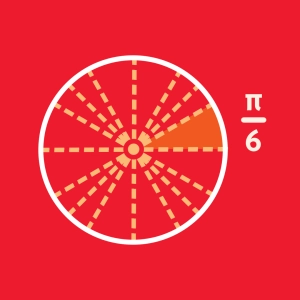 Cosine and sine functions
Cosine and sine functions
Learning objectives
- To analyze and interpret the basic sine and cosine trigonometric functions (role of the parameters, period, amplitude, phase shift and argument).
- To associate the value of a sine or cosine function to the x or y axis with the point on the Trigonometric unit circle.
- To compare 2 sine or cosine functions with different phase shifts and deduce the trigonometric formulas.
Consider a point situated on a circle with radius A. The circle has a center that coincides with the origin in the cartesian plane. Instead og using the rectangular coordinates to label this point, the x– and y- coordinates at a point on the unit circle given by an angle x (in radians) are defined by the functions x=cosx and y=sinx.
The sine function represents the shift on the y axis of the point by the function of its angle x in radians. The sinus function is defined by the equation f(x) = A sin(x).
The cosine function represents the shift on the x axis of the point by the function of its angle x. The cosine function is defined by the equation f(x) = A cos(x).
These two functions present some common characteristics:
- The values of the functions oscillate between A and -A. The parameter A corresponds to the amplitude of the function (the half-way point between the maximum and minimum values).
- The cycle repeats infinitely: the functions are periodic by period P: f (x+P) = f(x). The space between two cycles is called the period, it is also the distance between two maximums (or minimums). For the basic function, the period equals 2π radians (one complete turn of the unit circle): f(x+ 2π) = f(x).

Discover EduMedia for free
The interactive encyclopedia that brings science and math to life in the classroom.
Over 1,000 resources





